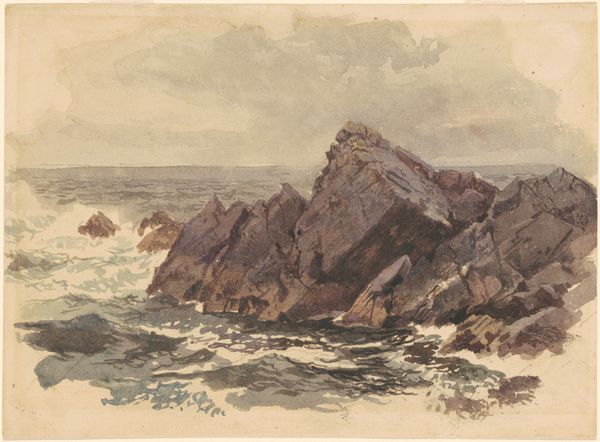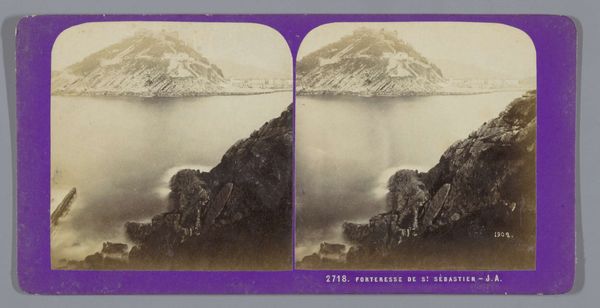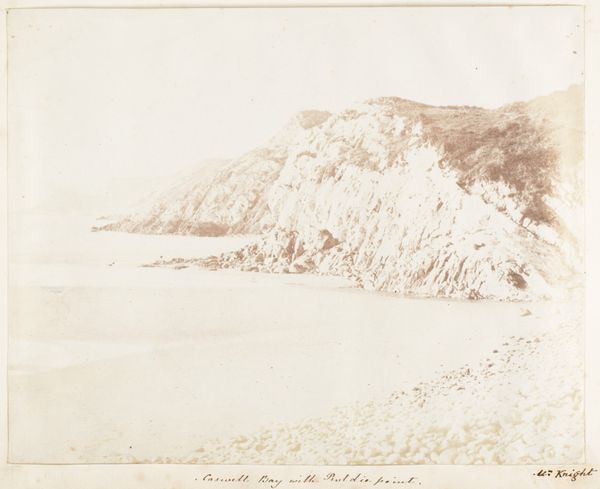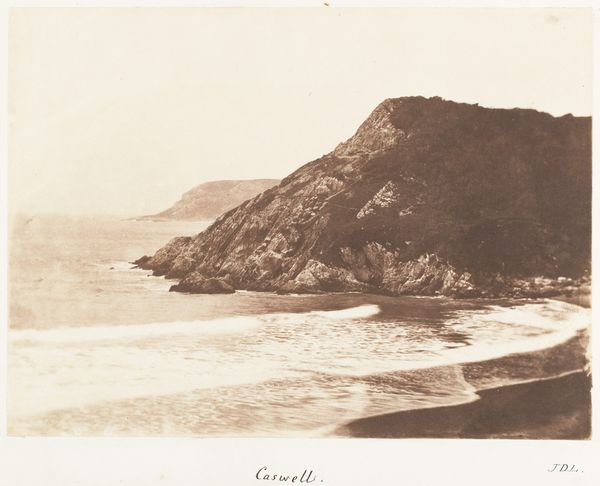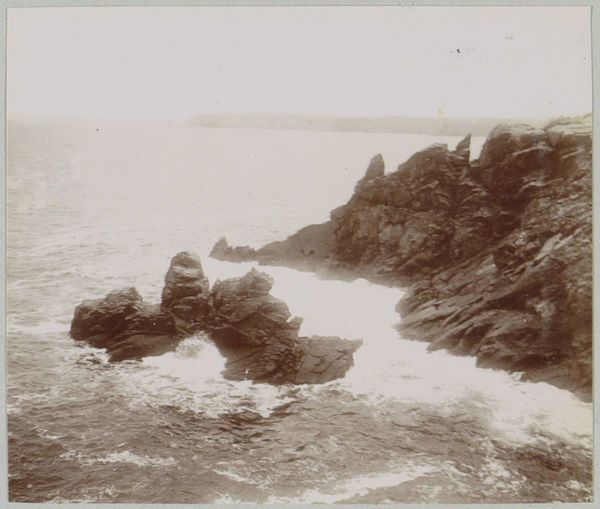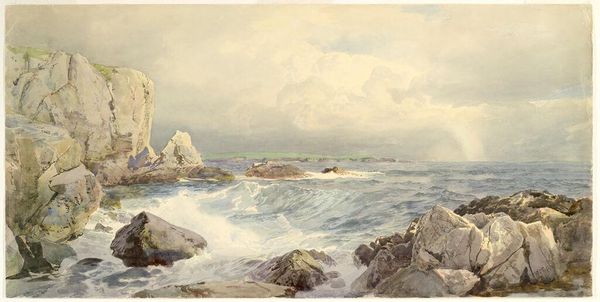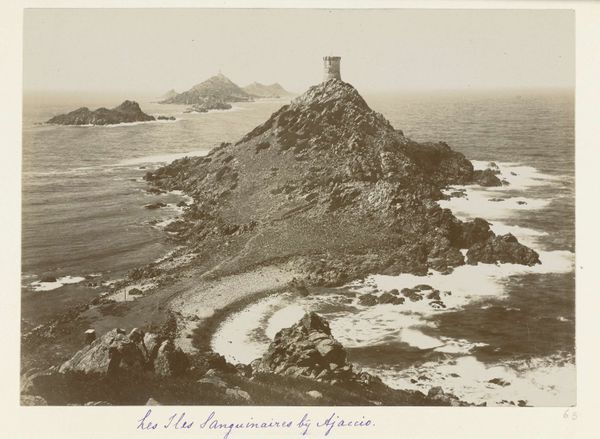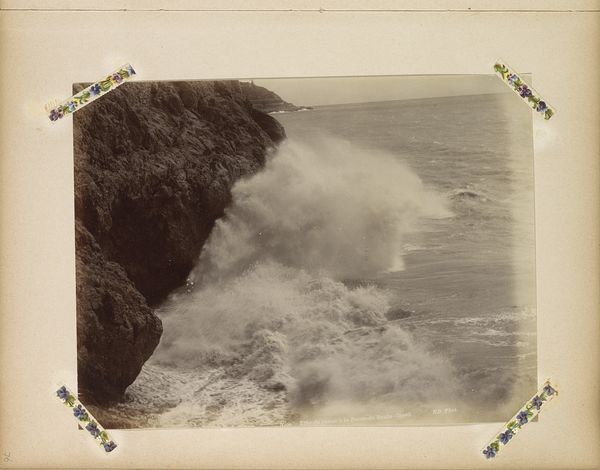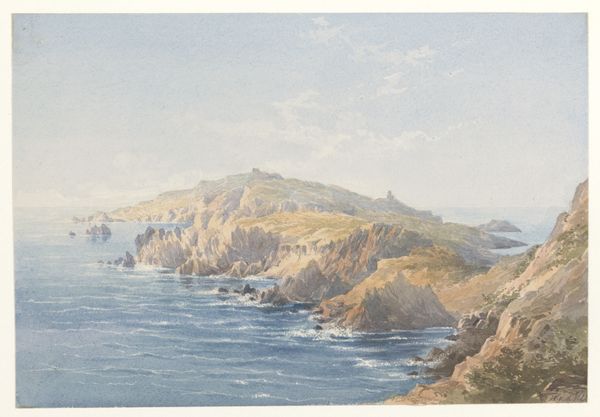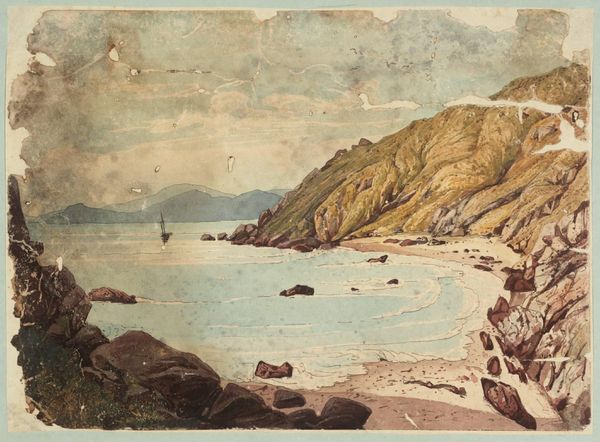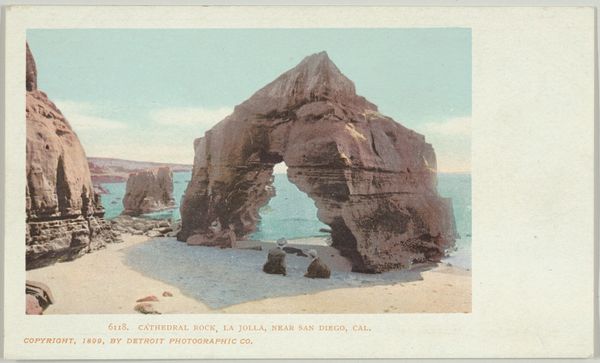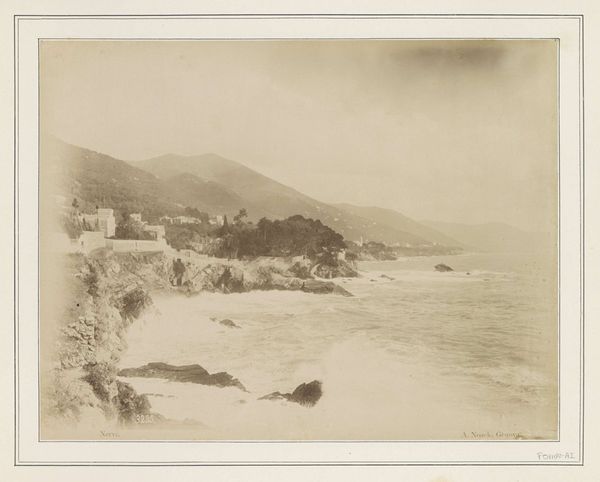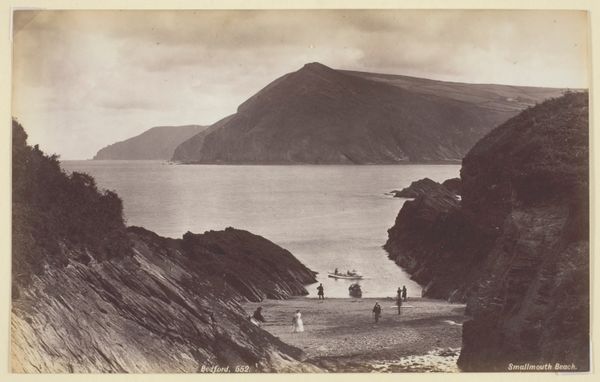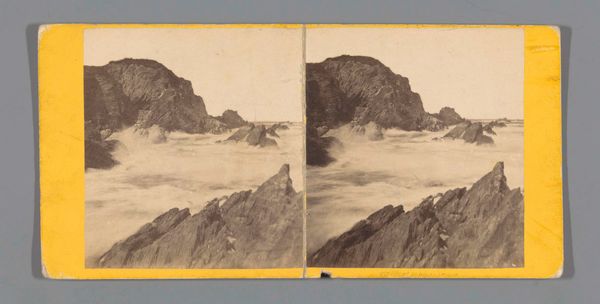
Kamelhovederne og Løvehovederne, rotsen in de vorm van kamelen- en leeuwenkoppen, Bornholm 1898 - 1935
0:00
0:00
photography
#
pictorialism
#
landscape
#
photography
Dimensions: height 89 mm, width 168 mm
Copyright: Rijks Museum: Open Domain
Editor: This stereoscopic photograph, titled "Kamelhovederne og Løvehovederne, rotsen in de vorm van kamelen- en leeuwenkoppen, Bornholm," capturing the Bornholm cliffs sometime between 1898 and 1935, presents a stark coastal scene. What really catches my eye is the layering of rock, water, and sky - but it’s interesting to consider the labor of the photographer creating and capturing this landscape. What stands out to you? Curator: Considering its production as a photographic stereograph, it asks us to reflect on materiality itself. How might its role as a manufactured, easily reproduced object complicate the idea of it being a traditional "artistic" landscape? Editor: That's a great point. Because these were produced as commercial images, how do you think that influences how we understand the rugged natural scene itself? Curator: I find the use of photography here compelling. In choosing this reproducible medium to capture the sublime cliffs, it opens up how landscape becomes a consumable good. Do you see a tension there? Between the mass-produced and the seemingly 'untouched' vista? Editor: I think so. There's a romantic ideal of nature, yet the image becomes widely accessible, almost demystifying it. How would the image circulate? Curator: Exactly. One can imagine the audience: this photograph might find its way into middle-class parlors, enabling a form of armchair tourism that fundamentally alters the understanding of geographical space through the lens of the consumer. These mass produced items impacted industry in profound ways. Editor: That’s such a valuable perspective. Now I see how the materiality and circulation of this photo shapes its meaning so much more. Curator: I’m glad that the idea of production adds value to this already arresting depiction of the coast.
Comments
No comments
Be the first to comment and join the conversation on the ultimate creative platform.
